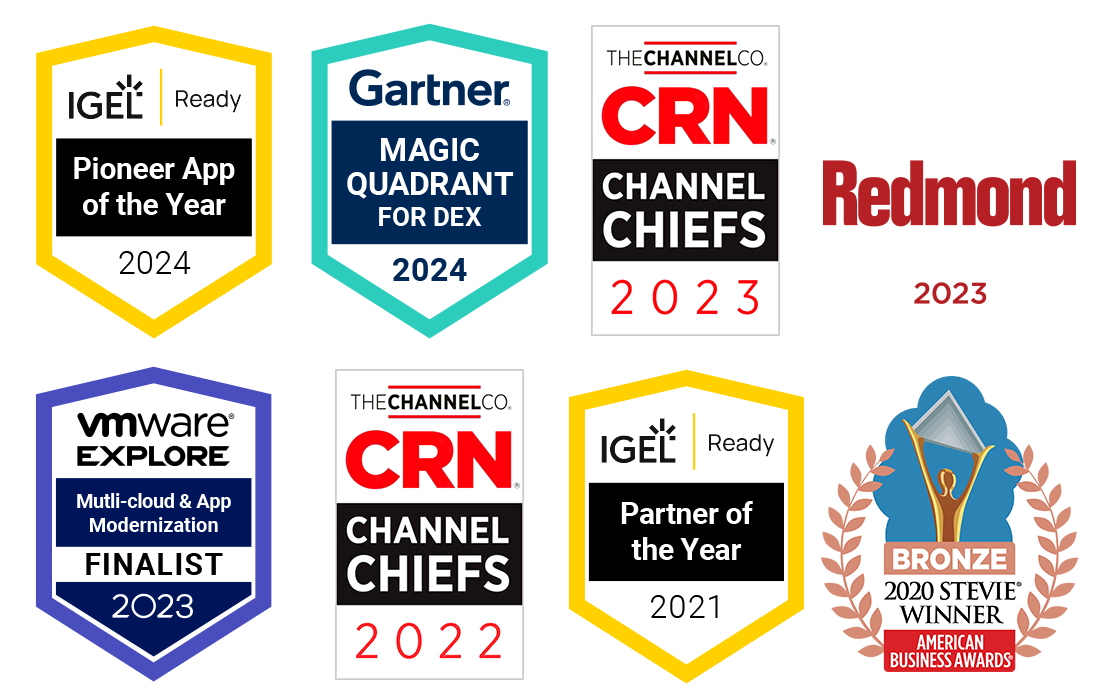Award-Winning Company Founded and Led by Industry Experts.
Liquidware is the leader in Digital Workspace Management across all Windows delivery types and is in use by enterprise organizations around the world. Founded in 2009 by end user computing experts, Liquidware is an innovator with solutions that support all major platforms including Microsoft, Citrix, Omnissa, and Amazon.
The company has anticipated every major milestone in the evolution of end user computing with to keep its customers at the forefront of dynamic workspace delivery. Liquidware Goes Beyond DEX by delivering a comprehensive suite of solutions that not only optimize the digital employee experience but also provides advanced user and app management across any Windows workspace —virtual, physical, or cloud.

About Liquidware
Since 2009, Liquidware has been at the forefront of digital workspace management. We provide an innovative suite of solutions that close gaps left by leading platform providers including Omnissa, Citrix, Microsoft AVD and Windows 365, Dizzion and Amazon Workspaces. As an independent privately-funded company, Liquidware focuses exclusively on our mission to develop and deliver best-of-breed architectures enabling large enterprises to go beyond DEX.
Strategic Alliances
Our industry-leading platform partners include Microsoft, Citrix, Omnissa, Amazon, Dizzion, Workspot, Apporto, and Parallels. Liquidware offers platform-agnostic digital workspace solutions that enhance user experience and boost productivity in hybrid complex DEX environments.
Awards
Over the years, Liquidware has been the recipient of numerous awards and designations. These awards have recognized our spirit and commitment to creating the best unique solutions that provide innovative features that cannot be found in alternative offerings.

Liquidware
Executive Team
We’re a cross-disciplinary team that loves to create great experiences for our customers.

David Bieneman
CEO
David Bieneman is a tech entrepreneur with 30 years in virtualization and EUC. He founded Vizioncore and Liquidware, pioneering backup for VMware and modern digital workspace solutions. His work has helped IT teams simplify management and improve user experience.

Chris Akerberg
President & COO
With 20+ years in tech, Chris helped grow Sprint, Barracuda, Acer, and Vizioncore before joining Liquidware as President and COO. He leads Sales, Marketing, and Ops, driving digital workspace innovation. He holds a Bachelor of Science from Northern Illinois University.

Jason Mattox
Chief Technology Officer
With more than 20 years experience, Jason Mattox is well-known in the digital workspace community for his world-class knowledge and leadership in end-user and cloud computing. Jason is often a featured speaker at conferences and events.

David Feathergill
Chief Software Architect
With an extensive background in designing ground-breaking digital workspace software, David Feathergill focuses on bringing state-of-the-art sophisticated technologies into product development strategies and enhancements at the company.

Jason E. Smith
VP, Marketing & Alliances
Jason E. Smith joined Liquidware in 2009 as a previous owner of ProfileUnity. He has played a vital role in Liquidware's growth. As VP of Marketing & Alliances, he leads Marketing and drives strategic partnerships.

Morteza Esteki
Senior Vice President and GM, Northern Europe
Morteza Esteki is SVP and GM for Northern Europe, leading sales and operations across the region. With prior leadership roles at RES and Quest Software, he brings deep software industry experience to drive growth and success for our Northern Europe teams.

Jenna Hicks
VP, Client Engagement
Jenna Hicks is VP of Client Engagement at Liquidware with 20+ years in sales. For over a decade, she’s helped modernize large, complex digital workspaces. Known for her client-first approach, Jenna drives innovation and is a trusted advisor in workspace transformation.

Sonja Pelichet
Board Member, GM CEE, Middle East & ANZ
Sonja Pelichet, a founding board member, joined Liquidware from DUNES Technologies SA. She invested early, secured key funding, and co-founded Liquidware SA in Switzerland. She now leads sales and channel operations across CEE, Middle East, and ANZ.

Joseph Ahn
VP, APAC
Joseph Ahn leads Liquidware’s APAC business, bringing decades of experience in channel and sales operations across Asia. He drives growth through regional strategy, partner relationships, and cloud-based proof-of-value platforms that boost engagement.
Support
Our support team is here to help.
Sales
Questions about a product? Get in touch!
Phone
Mon-Fri from 8am to 5pm
Liquidware Labs
Our Locations
Find the location the best fits your needs!
ATLANTA - WORLDWIDE HQ
3600 Mansell Road
Suite 200
Alpharetta, GA 30022
Phone:
+1 678-397-0450
Fax:
+1 678-397-0339
CHICAGO
630 N. North Court
Suite 200
Palatine, IL 60067
BENELUX
Laan van Kronenburg 14
1183 AS Amstelveen
The Netherlands
mailto:info@liquidware.eu
Phone:
+31 (0) 85 0654675
SWITZERLAND - DACH
Rue des Fontaines 14
1274 Signy-Avenex
Switzerland
mailto:infoEMEA@liquidware.com
Phone:
+41 79 872 2954
UNITED KINGDOM
Quatro House
Frimley Road
Camberley
Surrey. GU16 7ER
Phone:
+44 (0) 1276 804 547


